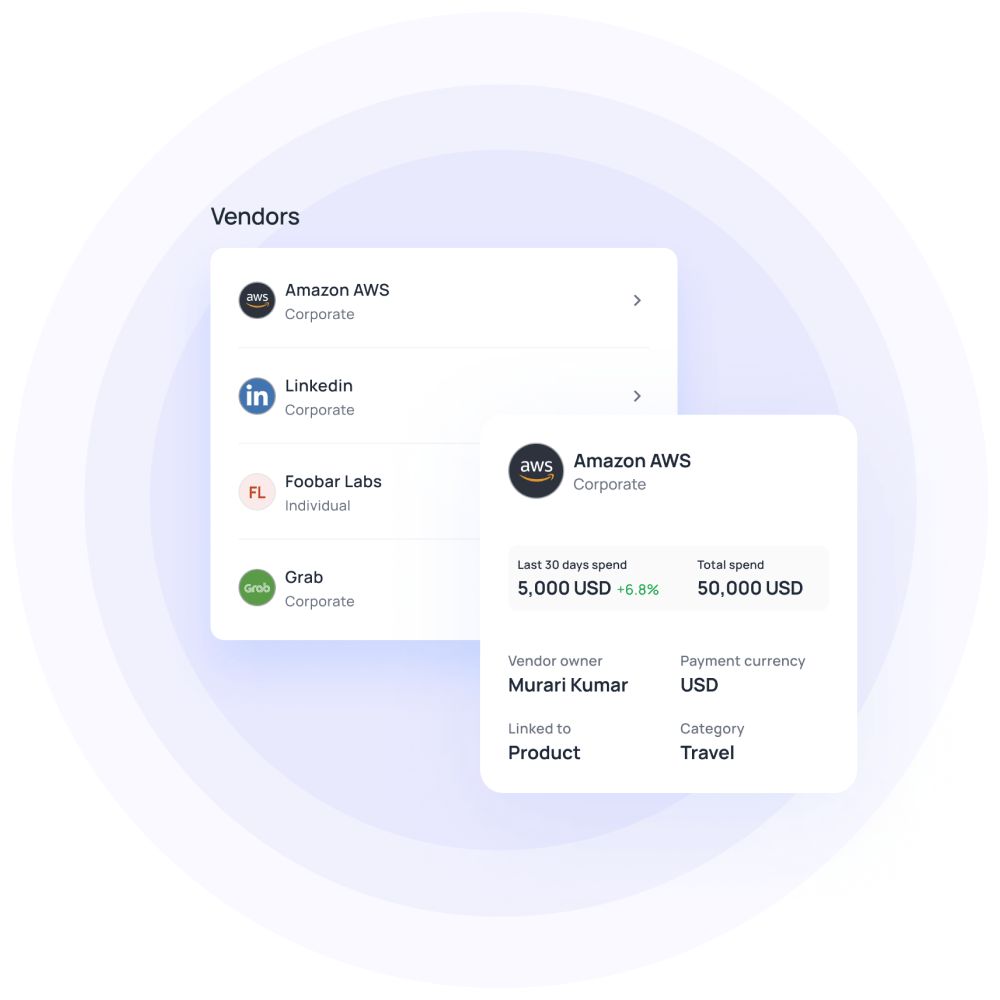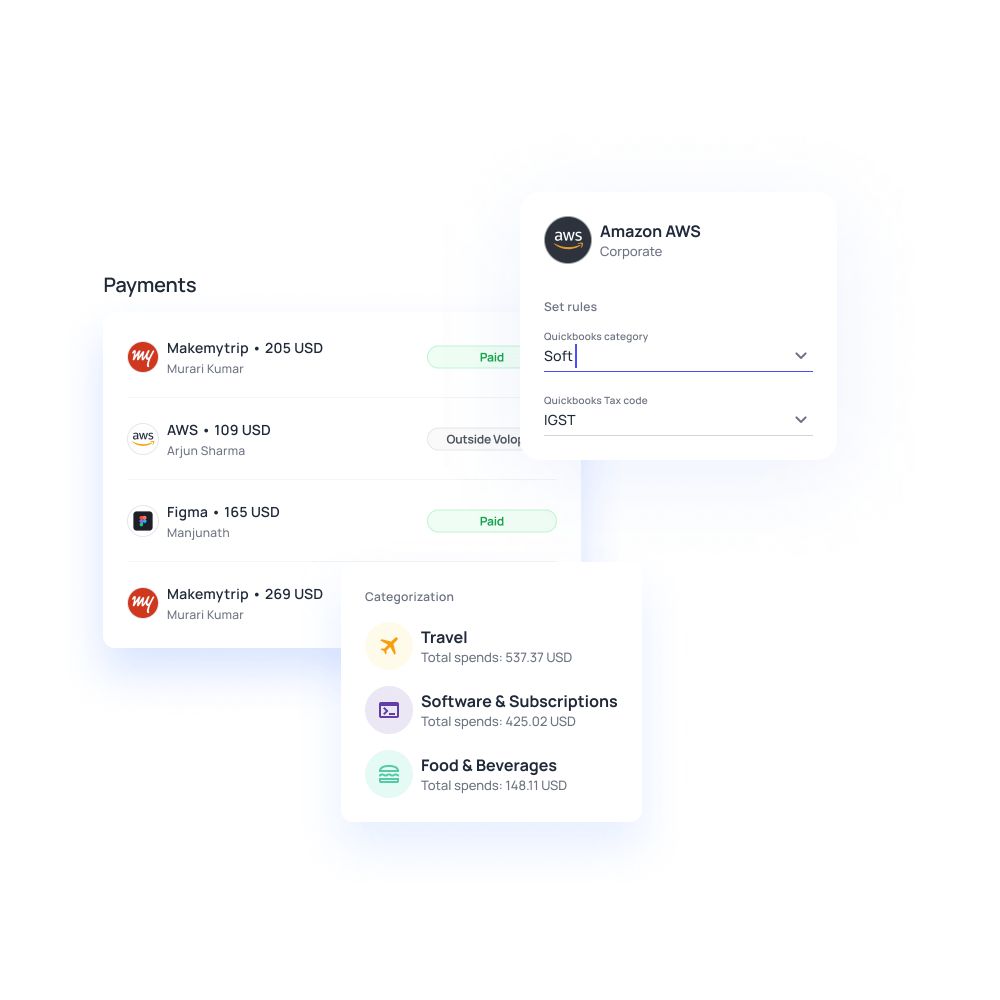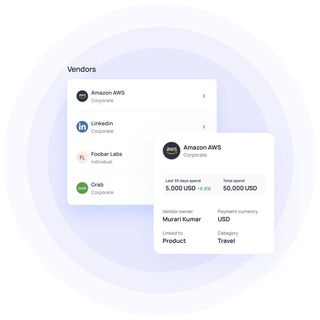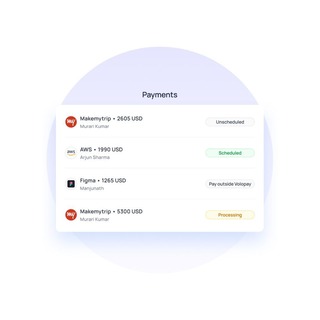Accounts payable KPIs to track for better performance
The term key performance indicators is not something unknown to the business world, but accounts payable KPIs are qualified as quantitative data which are tightly connected with the profitable achievement of a particular business project.
What are KPIs?
Almost every business function uses key performance indicators (KPIs) to estimate their productivity and contribution to the success of the business as a whole. Furthermore, Accounts Payable processes are also in the same boat and need definite KPIs.
An adequate KPI in accounts payable should be precise, accepted by all members of the project, and have a time limit. The measurement of KPIs must be done constantly in at least a quarterly time interval.
This must be done to assess the effectiveness of the accounts payable process improvement initiatives and identify areas for further optimization..

Why are accounts payable KPIs important?
Every company should track its account payable KPIs to recognize restrictions and augment the competence of the accounts payable team. KPIs are effective tools for the accounts department to regularly measure their performance against important business purposes and set future development targets. Accounts payable KPIs also supply data for formulating short-term and long-term payment plans.
Furthermore, tailing KPIs in accounts payable can help in determining the weak links in the process and functional setbacks. If you analyze the KPIs in the right manner, the solution for all AP problems can also be scrutinized from them.
To analyze the KPIs in the right manner, the AP department of your company has to highlight the actionable points from the useful KPIs and track the improvements arising from the execution of the new solutions. With the increased productivity that comes with KPIs, your company can make so much more profit.
Want to automate your accounts payable process?
Accounts payable KPIs businesses should track
DPO (Days Payable Outstanding)
DPO is a financial ratio that is used to compare accounts payable, cost of sales, and the number of bills that still need to be paid. This is done to calculate the average time that the company usually takes to pay its invoices and bills.
Generally, DPO is measured annually or quarterly to evaluate how the cash flow balances are being managed in a company. This implies that by regular DPO measurement, your company will be able to do much more with your money than just pay bills.
A company that has a high days payable outstanding has the opportunity to use the cash to solve other problems of the company. More good production, earning interest, etc.
Cost per invoice
Cost per invoice is the total average for processing one invoice in an organization, but this cost may vary from business to business depending on factors like calculation. A company’s cost per invoice can seem pretty low just because they somehow neglected the calculation of hidden costs which have the potential to affect their profit margins.
For example, an organization using a high paper and labor-intensive invoice process should include the operational cost, time consumed, vulnerability to human errors in the calculation.
Along with this, the cost per invoice should also contain the time invested in accounts payable processes. This needs to be thoroughly understood that the added human labor cost can significantly increase the overall processing cost.
Cost per invoice is majorly calculated from- staff costs, mailing and printing costs, late payments, errors, lost discounts, audit costs, and equipment costs.
Invoice processed per employee
The number of invoices processed per employee is a KPI of accounts payable, which often isn’t considered a critical instrument, but this does not mean that you should ignore it.
This is a prominent indicator of work potential and performance capabilities. The number of these accounts payable KPI may also fluctuate from business to business in regards to the way it is measured, weekly, monthly, quarterly, or annually.
The easiest way to calculate Invoices processed per employee is by considering your annual volume of invoices and dividing it by the number of employees working in the account payable process.
Steering with invoice processing automation decreases a load of cumbersome tasks off the accounts payable team and saves their time. However, this does not mean that the AP staff of your company needs to be laid off. Instead, all the freed time can now be invested in actually using the scholarly aspects of the AP team for strategic tasks like report and data management strategy planning.
Vendor payment errors
Vendor relationships can be major damaged by delays in payments. But we understand that vendor payment errors are common mistakes.
To identify the vendor payment error, take the number of outgoing payments that the AP department has processed but have mistakes such as incorrect amount, wrong address, double-entry, etc., and divide that number by the total number of transactions undertaken in the same time duration.
Another KPI here is the duplicate payment rate. Even organizations that seem to be performing excellently record a least 0.8% of duplicate payment rates. To calculate the percentage of duplicate invoice payments, take the number of invoices paid more than once in the given time duration and divide it by the total number of invoices paid over the same time duration.
Average time for one invoice approval
Approvals of invoices and payments are a challenge all AP professionals believe to be one of the most difficult ones. Research shows that for an invoice to be approved by two to five people, it takes 14.1 days.
Another research from Ardent Partners highlights that more time invested in approvals does not always result in more accurate payments. On average, 1/10 payments raise disputes between your vendor and your company.
Invoice cycling time
Invoice cycling time is the time consumed between the business receiving the invoice from the vendor and when payment is made. A study released by Canon shows that, on average, a company takes 13.5 days, and the least time takes 3.3 days.
Your vendor relationships can be significantly improved if you manage to shorten this cycle. Late payments or extensions in this payment cycle time impair your relationship with your suppliers and also indicate the ineffectiveness of your company’s AP function.
Percentage of invoice exceptions
Accounts payable automation is an extremely beneficial system for your business as it automates your invoice processing, matching invoice to purchase orders, comparing the detail of purchases with the data received from vendors, all this in just seconds. Automation software eliminates the need for manual labor and manages the whole payments and discount information.
As accounts payable departments still underperform, even after invoice expectation is a major driving force, expectations are normal. With the automated process expectation, KPIs show improvements. Surveys show that manual accounts have a majority of data-entry issues. You have to realize that even one mistake could freeze the whole process.
Top payment method
Paying suppliers using electronic payment methods brings along many benefits for your company. Unfortunately, many businesses even today use checks to make payments to their suppliers.
A popular survey conducted by Pymnts.com records checks to be the most popular vendor payment method. However, the accounts payable department ranks checks as their seventh preferred payment method.
Accounts payable expense as a percentage of revenue
Operating expenses connected with the accounts payable cycle are important; still keeping track of these costs and analyzing them as a percentage of revenue help you make informed decisions towards staff recruitments, amount of manual processing needed, and alternate options to human-centric tasks.
To calculate this, take the total amount of expenses incurred by account payable and divide it by the revenue of that period. The 2019 Robert Half Benchmarking Accounting and Finance report highlights that businesses under $25 million in revenue employ an average of three people in finance.
Companies between $25-$99 million employ six and larger than $100 million employ 13 people in finance. The percentage of employment in finance may seem below, this is because these companies use automated accounts payable software.
Percent of invoice processed straight through
You can polish the managerial processes of your company by calculating the number of invoices matched with POs and paid without any manual labor invested. A study shows that in top-tier companies an average of 71% of invoices can be straight-through processing.
How can automation improve AP KPIs?

Decrease DPO by boosting approvals
Curtail invoice processing costs
Reduce human labor in AP processes
Increases accuracy
Pay invoices without any manual intervention
Automate payments and line up with vendor discounts
Helps in building strong supplier relationships
Segregate better to decrease fraud and errors
Volopay for automated accounts payable process
All the KPI problems mentioned above and challenges faced by the accounts payable department can be easily solved with an automated accounts payable process. The best accounts payable solution available in the market is Volopay. If you want your whole spend management system to be efficient and extremely productive, Volopay is your destination.
Invoice processing
Volopay's invoice management system streamlines the entire invoice processing workflow.
By automatically capturing and recording crucial information from invoices, it ensures timely payment processing.
This transparent and trackable system provides complete visibility into the status of each invoice, ensuring elimination of errors..
User friendly interface
The product has a user-friendly interface that helps in easy navigation without any expert technical knowledge or equipment expertise.
Its intuitive design allows users to quickly learn and perform tasks efficiently, without the need for extensive training or support.
This streamlined approach ensures a smooth and enjoyable experience, saving precious time and effort of every user.
Bill pay
An easy bill pay feature or money transfer feature allows you to transfer money across more than 130 countries.
This means you can make both domestic and international payments at the lowest possible processing cost.
This feature also helps you to manage your funds across cards and accounts in multiple currencies.
Virtual cards
Volopay’s virtual cards can make the whole account payable automation much simpler. These virtual cards are unique, budget-based, and extra secure with a real-time transaction tracking facility for better control over your financial operations.
Volopay’s virtual cards are extremely beneficial when it comes to vendor payment management. You can create one-time-use virtual cards for short-term engagements and recurring use virtual cards for long-term engagements with your vendors.
Approval workflow
With Volopay the whole approval process becomes a matter of minutes. Fund requests and budget allocation are right away directed to the assigned managers. They can approve any expense within minutes either through the web platform or Volopay’s mobile app.
Your employees would never face the problem of lack of funds or inability to make vendor payments. All the approvals and transactions are integrated into your accounting software for better financial management and control of expenses.
Supported by
We are proud to be supported by world's leading investors, founders and senior leadership of world's leading companies










Get the best accounts payable software for your business
Related pages

With the accounts payable automation, you can eliminate the common challenges such as slow invoice processing and data entry errors.

With the accounts payable automation, you can improve vendor relationships, prevent invoice duplication and pay the vendor on time.

Read our article for an in-depth understanding of accounts payable, it's challenges and some strategic ways to simplify it for your business.